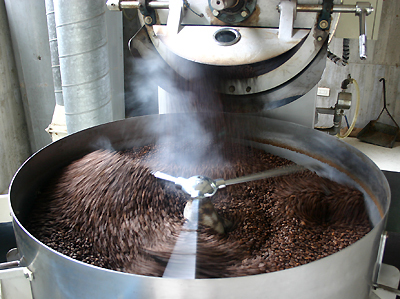A brief introduction to the grinding scale production area of Ethiopian coffee beans by describing the characteristics of taste and flavor
Ethiopian coffee beans characteristics taste flavor description processing method grinding scale production area introduction
Coffee is Ethiopia's most important export cash crop and the main source of foreign exchange earnings. Ethiopia's coffee exports account for about 3% of the world market share, making it the eighth largest coffee exporter in the world. Coffee exports increased steadily from 58,000 tons in 1990-1991 to 110,000 tons in 1995 - 1996 and remained at that level for the next few years. Export volume exceeded 110,000 tons in 2001 - 2002 and reached 127,000 tons in 2002 - 2003. The decade-long decline in coffee prices on the international market has seriously affected Ethiopia's foreign exchange earnings. Before coffee prices dropped dramatically
Ethiopia's beans are easy to identify, most of the beans are small and thin pointed long beans, so-called 'longberry', and often mixed with small oval short beans, so-called' shortberry', which look different in size and shape. Most commercial Grade4 or Grade5 beans are mixed with hundreds of different seeds from different producing areas, so the phenomenon of uneven phase is the most obvious, and it is not easy to bake evenly.
Washed coffee accounts for 35 per cent of exports. Good quality washed coffee is processed from freshly picked fully ripe fruit, carefully picked and closely monitored by professionals. After picking clean coffee beans on the day of picking to pulp, then fermentation, washing, drying, peeling. After processing, the humidity of coffee beans is maintained at about 12%.
Ethiopia, coffee classification and quality control system is divided into producer, regional and national three levels. All coffees are inspected by local inspection agencies before they leave the country of origin, and then re-inspected at coffee inspection and grading centres in Addis and Diredova to determine their quality grade. Grading coffee before auction and sale is important for all groups involved in production, acquisition, export and consumption. Before export, coffee must also be sent to a national quality control agency for inspection to confirm that origin, color, etc. meet export standards to ensure the reputation of Ethiopian coffee

Important Notice :
前街咖啡 FrontStreet Coffee has moved to new addredd:
FrontStreet Coffee Address: 315,Donghua East Road,GuangZhou
Tel:020 38364473
- Prev

Description of acidity and flavor of Sumatra coffee beans A brief introduction to the grinding scale of taste treatment
Description of acidity and flavor of Sumatran coffee beans A brief introduction to the grinding scale because coffee beans have four layers of protective pericarp, pectin, seed shell and silver skin. In the washing method, only the first two layers were removed, and the seed shell and silver coat were preserved and dried in the sun. In the wet planing method, however, the third and fourth layers of protection are removed midway, that is, the falling body is sunbathed, which is the blue-green color of Sumatra raw beans.
- Next

Characteristics of Brazilian Yellow Bourbon Coffee Taste Treatment Flavor Description Production Region Variety Introduction
The characteristics of Brazilian yellow bourbon coffee taste processing method flavor description of the region of origin variety introduction In addition to the most famous Bourbon in Brazil, it is followed by Bourbon in Indonesia. In Indonesia's tropical rain forest sultry climate, so that its taste has a unique change. Add a strong orange flavor to the lemon flavor of the talk Bourbon species native to Bourbon Island or Ethiopia, easy to
Related
- Detailed explanation of Jadeite planting Land in Panamanian Jadeite Manor introduction to the grading system of Jadeite competitive bidding, Red bid, Green bid and Rose Summer
- Story of Coffee planting in Brenka region of Costa Rica Stonehenge Manor anaerobic heavy honey treatment of flavor mouth
- What's on the barrel of Blue Mountain Coffee beans?
- Can American coffee also pull flowers? How to use hot American style to pull out a good-looking pattern?
- Can you make a cold extract with coffee beans? What is the right proportion for cold-extracted coffee formula?
- Indonesian PWN Gold Mandrine Coffee Origin Features Flavor How to Chong? Mandolin coffee is American.
- A brief introduction to the flavor characteristics of Brazilian yellow bourbon coffee beans
- What is the effect of different water quality on the flavor of cold-extracted coffee? What kind of water is best for brewing coffee?
- Why do you think of Rose Summer whenever you mention Panamanian coffee?
- Introduction to the characteristics of authentic blue mountain coffee bean producing areas? What is the CIB Coffee Authority in Jamaica?

